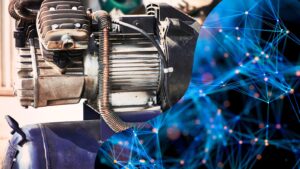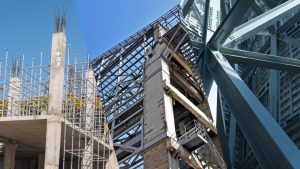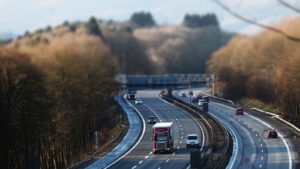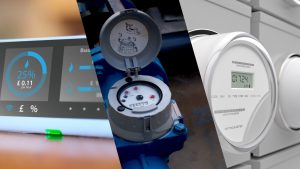With climate change, urbanisation and the increasing population in the world, access to clean water for drinking or human purposes is limited. Australia, in particular, has always had low rainfall. This is evidenced by the percentage of rainfall water that the rivers collect, which is 12 percent, whilst the rest soaks into the ground. Additionally, the millennium drought between 2000 – 2009 has led the government to recognise mechanisms to implement practices that treat wastewater for reuse.
With the return of similar drought conditions in eastern Australia back in 2019, there has been a need to hasten wastewater treatments. Guidelines have been implemented for recycling all forms of wastewater for a long time. To date, Brisbane holds an advanced purified recycled water plant, whilst the cities of Adelaide, Sydney and Melbourne have installed desalination plants and dual pipes. Despite the above, households use potable drinking water for all purposes, wasting the limited source of freshwater. There are specific purposes wastewater is used for, and understanding what they are would help replace the need to use fresh drinking water for such activities. Here is all you need to know about wastewater treatment, from what it is and how it is treated.
What is Wastewater?
Water used for purposes other than drinking, which subsequently gets collected, is called wastewater. Wastewater can be categorised into two: greywater and blackwater. Wastewater produced by non-toilet plumbing fixtures in a household, such as the water used in showers and washing machines, is called greywater. In contrast, water used in toilets and kitchen sinks is called blackwater, also known as sewage or brown water. It is also sometimes referred to as floodwater since water that overflows during heavy rain is collected in the same tank that collects blackwater. Recycled greywater is used for flushing toilets and washing machines and is the type of wastewater most advantageous during drought periods. Recycled blackwater is generally used for gardening, although only when there are fewer chemicals. Recycled blackwater can only be used for outdoor activities and is often utilised for subsurface irrigation because it has more bacteria that need to be destroyed. Knowing the different types of wastewater is essential since they are collected in separate tanks and are treated differently.
How Is Wastewater Treated?
Four common types of wastewater treatment are used to remove solids, organic matter, pathogens and metals in sewage water. This includes physical water treatment, biological water treatment, chemical treatment, and sludge treatment. These are respectively regarded as the preliminary, primary, secondary and tertiary treatment stages. At the end of the entire process, the wastewater treatment is meant to be in a near potable standard, thereby indicating its safe use for human purposes.
Physical Method:
No chemicals are used at this stage. Instead, the wastewater is screened and cleaned using a physical method. Three well-known physical methods used include sedimentation (breaking away the heavy particles from the wastewater to remove solids), aeration (circulating air through the water to give oxygen)and filtration (filters out any contaminants).
Biological Method:
Biological processes are used to separate organic matter from wastewater. In other words, this method separates soap, oils, food and human waste, whereby microorganisms metabolise the organic matter in sewage water. This is done in three ways, namely, through aerobic, anaerobic and composting processes. On the one hand, the aerobic process refers to the method in which bacteria decompose organic matter and convert it into carbon dioxide. Hence, oxygen is also produced, and recycled wastewater can be used to water plants.
On the other hand, during the anaerobic process, fermentation is used to ferment the waste at a specific temperature. Oxygen is not produced at this stage. Composting is a way of treating wastewater by mixing it with sawdust or other carbon sources.
Chemical Method:
As indicated by the name, chemical methods incorporate different kinds of chemicals to treat wastewater to prevent bacteria from being reproduced. Some, for instance, use chlorine, an oxidising chemical that can kill bacteria and can decompose the wastewater by adding contaminants. Another common oxidising agent is Ozone. Moreover, wastewater treatments use a neutralisation technique to bring the water to its natural pH of 7. This is done by adding an acid or base level. In essence, chemicals are used to sterilise the wastewater to ensure that infections are not transmitted.
Sludge Method:
In this process, solids and liquids are separated. The sludge method is regarded to be the most effective in this regard. It requires the least possible residual moisture for the solid phase and the lowest possible solid particle residues for the liquid phase. A device such as a centrifuge is used To do this. The purpose of this stage is to raise the quality of the water to domestic and industrial standards.
Find a Reliable Wastewater Treatment Provider
Australia is no stranger to wastewater treatment. It has been a solution that the country has consistently attempted to implement, and Tigernix has been one of the most intelligent wastewater asset solutions. It has been implemented by municipal council providers who implement the wastewater collection, treatment, pumping and reuse solutions that the suite is equipped with. A reliable wastewater treatment provider such as Tigernix can, thus, ensure that wastewater is adequately recycled and used for the intended purpose.







